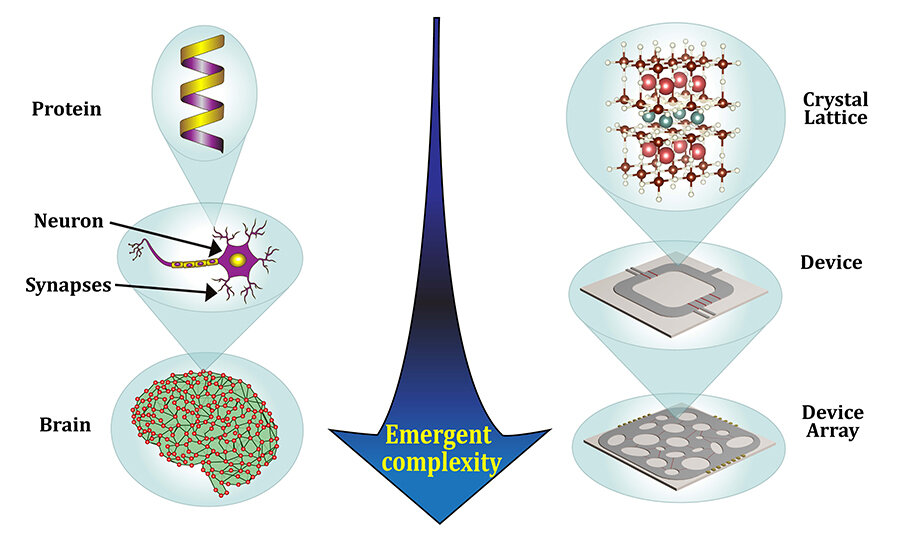The Quantum Leap: Creating Brain-Like Computers with Quantum Materials
In a world where computers crunch numbers at lightning speed and provide instant recall of trivia, it's easy to overlook the marvel of the human brain. Our brains process intricate information seamlessly, distinguishing faces and comprehending complex scenes effortlessly. But what if we could infuse computers with brain-like efficiency while minimizing energy consumption? The groundbreaking research by the Quantum Materials for Energy Efficient Neuromorphic Computing (Q-MEEN-C) consortium, spearheaded by the University of California San Diego, is unlocking this extraordinary potential.
Powered by a vision of computers that mimic the remarkable prowess of our brains, the Q-MEEN-C consortium is at the forefront of a technological revolution. Their journey began by exploring non-local interactions within quantum materials—a phenomenon where actions in one part of a system impact distant regions. This behaviour, intrinsic to the brain's functioning, holds the key to creating computers that think in a way reminiscent of human cognition. Their latest breakthrough, published in Nano Letters, marks a significant milestone in the quest for neuromorphic computing.
 |
| How neuromorphic computing mimics major brain features source : phys.org |
Quantum Materials: A Bridge to Brain-Like Efficiency
As the pandemic closed lab doors, the Q-MEEN-C team embraced the power of simulations to unlock the secrets of non-locality in quantum materials. Guided by UC San Diego's Assistant Professor of Physics, Alex Frañó, the researchers aimed to replicate brain elements like neurons and synapses. Harnessing the unique electronic properties of quantum materials, the team created a remarkable thin film of nickelate. By introducing electrical stimuli between electrodes, they triggered a dance of hydrogen ions, resulting in a persistent memory effect. This memory mimics the strengthening of connections in our brain through learning, promising a pathway to AI with enhanced cognitive abilities.
 |
| source:phys.org |
Simplicity Redefined: The Elegance of Non-Local Design
Unlike conventional circuits demanding intricate connections, the Q-MEEN-C approach simplifies hardware design. Drawing inspiration from non-local behavior, their circuits break free from the shackles of continuous connections. Picture a ripple in a spider's web—one vibration echoes throughout. Similarly, learning in our brain isn't linear; it thrives on interconnected complexity. As software simulations mimic brain functions, the key lies in hardware. Alex Frañó envisions a hardware revolution paralleling the software leap. By replicating non-local behavior, we edge closer to a new era of AI.
A Glimpse of the Future
The implications are profound. This quantum leap in hardware design propels us towards AI systems that learn from the physical world. Imagine machines that adapt and grow through interactions—a reality that could redefine artificial intelligence. Supported by the Department of Energy and fueled by the thirst for innovation, the Q-MEEN-C consortium's breakthrough is a beacon of hope. It beckons a future where computers truly resonate with the human thought process.
As our comprehension of brain functions deepens, a new chapter in technology unfolds. A future where AI merges seamlessly with neuroscience is on the horizon. The Q-MEEN-C consortium's research sparks the dawn of this new era—a realm where machines could mirror the intricate efficiency of the human mind.

Comments
Post a Comment